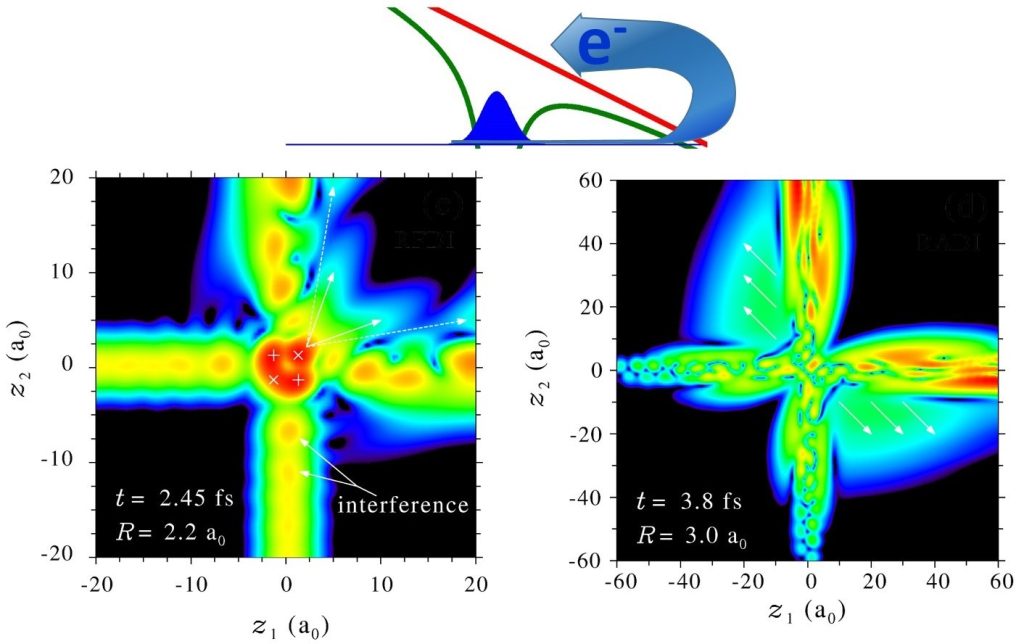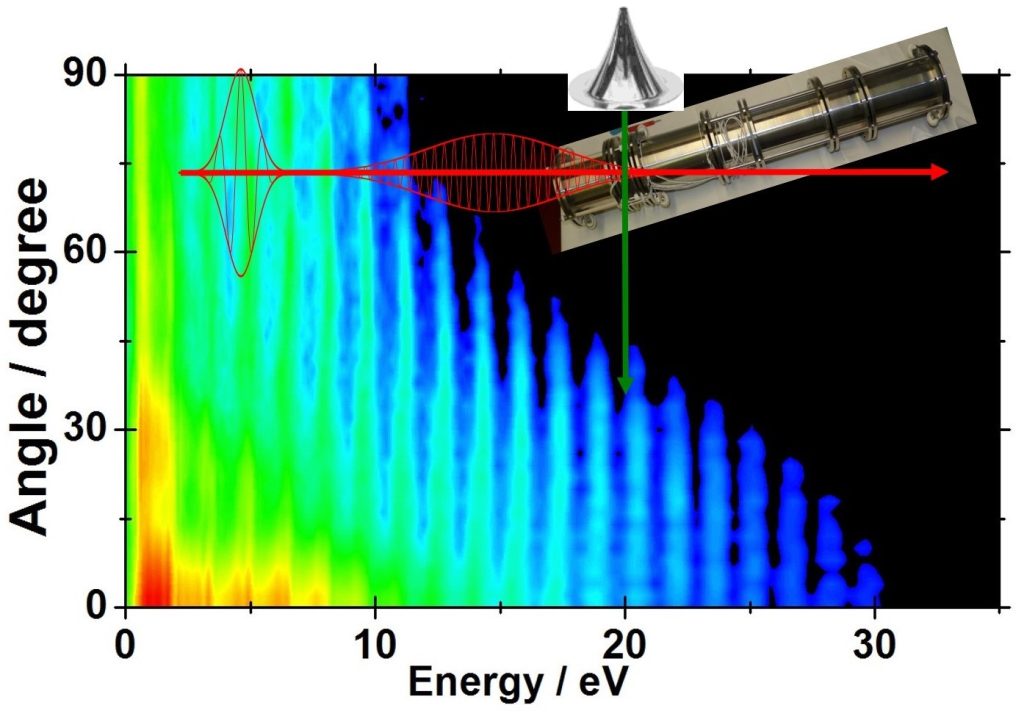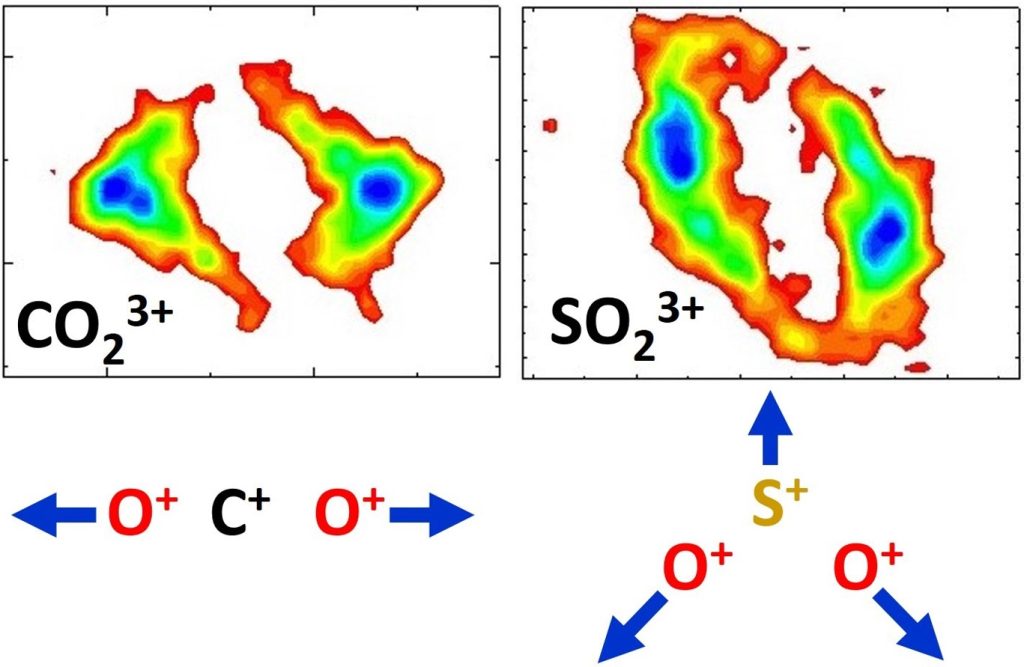Introduction
The single and multiple ionization of a molecule subjected to an intense laser pulse is studied experimentally for the development of imaging techniques such as electron diffraction and coulombic explosion. Excitation dynamics on the optical cycle scale, common to attosecond XUV pulse generation, offer the prospect of femtosecond time resolution.
Tunnel ionization and recollision
During tunnel ionization of a molecule by an intense, linearly polarized laser field, the photoelectron oscillating in the field can be emitted directly or recollide on the ionic core.
The much lower probability of recollision gives rise to the generation of harmonics by recombination and to scattering…


Electron diffraction
Electron-molecule and electron-molecular ion collisions play an important role in the photophysics and photochemistry of planetary atmospheres and plasmas. Laser-induced electron diffraction is based on the elastic recollision of the oscillating photoelectron in the laser field during tunnel ionization.
The specificity of laser excitation lies in the ability to measure this recollision on spatially aligned and oriented molecules with a first laser pulse, and in the detection of collisions with a 180° deflection angle that are difficult to achieve with an electron beam. A laser pulse at 0.8 µm in the1014 Wcm-2 illumination range characteristic of ionization…
Coulombic explosion
Molecular multiple ionization is easily detected with femtosecond pulses in the 1014-1015 Wcm-2 illumination range.
Small molecular ions with a charge greater than 3 are generally unstable, fragmenting into atomic ions whose kinetic energy is dominated by coulombic repulsion.

SOFOKLE laser platform
The Attophysics group manages the Sofockle laser chain, which delivers pulses at a rate of 3 kHz, wavelength 0.8 µm, duration 40 fs, and energy 700 µJ. A post-compression optical bench enables the duration to be reduced to 10 fs, with an output energy of 200 µJ.
Alongside coulombic explosion and electron diffraction experiments, the laser has hosted several experiments, including the transient absorption bench set up by Elsa Cassette (LUMIN, Université Paris-Saclay, formerly with the DICO group at LIDYL) to study the dynamics of…



